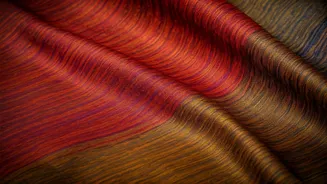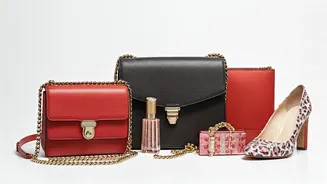Roots of Tradition
Indian fashion is deeply rooted in its diverse cultural heritage, with each region contributing unique aesthetics and craftsmanship. The use of natural
fibers, such as cotton, silk, and linen, has been a defining characteristic. Traditional textiles like the intricate Banarasi silk, vibrant Bandhani, and elegant Kanjeevaram silk saris showcase the exceptional skills of Indian artisans. For centuries, these textiles have not just been clothing but also symbols of cultural identity and social status. These handcrafted techniques, often passed down through generations, keep the legacy of Indian textile artistry alive. The inherent quality of the fabrics and the significance of the designs have influenced global fashion trends. It is worth emphasizing the cultural symbolism embedded in each garment, reflecting India's rich history and multifaceted traditions. The enduring appeal of these elements demonstrates their central role in shaping the Indian fashion story.
Modernization Impacts
The Indian fashion scene has undergone a remarkable transformation due to globalization, with exposure to international styles, trends, and designers. The integration of western influences is evident in the rise of ready-to-wear collections, contemporary silhouettes, and fusion garments that beautifully blend traditional elements with modern aesthetics. Designers in India are becoming increasingly innovative, experimenting with new fabrics, techniques, and designs. The accessibility of social media platforms has further accelerated these changes, providing designers with more opportunities to exhibit their work and connect with a global audience. This has led to an exciting interplay between tradition and modernity, creating a diverse range of styles that appeal to a wider audience, both within and outside of India. Furthermore, the increasing focus on sustainable practices and ethical sourcing reflects a growing awareness of the environmental and social responsibilities of the fashion industry.
Key Design Influences
Several pivotal factors have shaped the design language in Indian fashion. Bollywood's influence is undeniable, with actors and actresses constantly setting trends through their clothing choices, frequently showcased at awards shows and promotional events. Another critical factor is the significant role of craft-based design. The revival and celebration of traditional crafts, such as handloom weaving, embroidery, and block printing, is a prominent trend, providing sustainable livelihood opportunities for artisans and bringing authenticity to modern designs. The younger generation's preferences play a huge role. Their evolving tastes and desire for comfort, versatility, and self-expression have led to the rise of streetwear, fusion wear, and innovative designs that combine traditional and contemporary elements. Finally, the growing emphasis on sustainability and ethical fashion is impacting design choices, with designers embracing eco-friendly materials, responsible production practices, and supporting fair trade initiatives.
Emerging Trends Now
Present-day Indian fashion presents exciting new trends. There is a clear movement towards blending traditional Indian elements with contemporary styles, such as pairing saris with crop tops or wearing kurtis with jeans. This approach offers a fresh and relevant take on traditional attire, increasing its appeal to younger consumers. The rise of sustainable and ethical fashion continues to be a significant trend. Designers are increasingly employing eco-friendly materials and manufacturing processes. Furthermore, the growth of streetwear has also made its mark. This involves blending athleisure wear with local inspirations. Finally, there's an increase in body-positive clothing, which is a celebration of diversity. Fashion brands are incorporating a wider range of sizes and designs that celebrate all body types, which signifies a movement towards inclusivity and body positivity within the industry. The overall direction showcases Indian fashion's adaptability, cultural richness, and its ability to meet the shifting demands of consumers.
Future Trajectory
The future of Indian fashion looks incredibly promising, with several emerging trends that are likely to influence the industry. There is the potential for increased digital innovation, including virtual fashion, augmented reality, and e-commerce experiences, to offer new avenues for designers and retailers. A notable emphasis on personalized fashion is also emerging. Consumers are increasingly looking for custom-made pieces. Sustainability will persist. Designers will continue to incorporate innovative approaches for eco-friendly materials, with a focus on reducing the fashion industry's carbon footprint. The expansion of fusion wear will be pivotal as designers find new methods to combine traditional elements with modern silhouettes. Also, it's expected that Indian fashion will embrace global collaborations and further amplify its influence on the world stage. These changes are expected to drive innovation and inclusivity, helping to shape Indian fashion into a more vibrant and sustainable industry.



